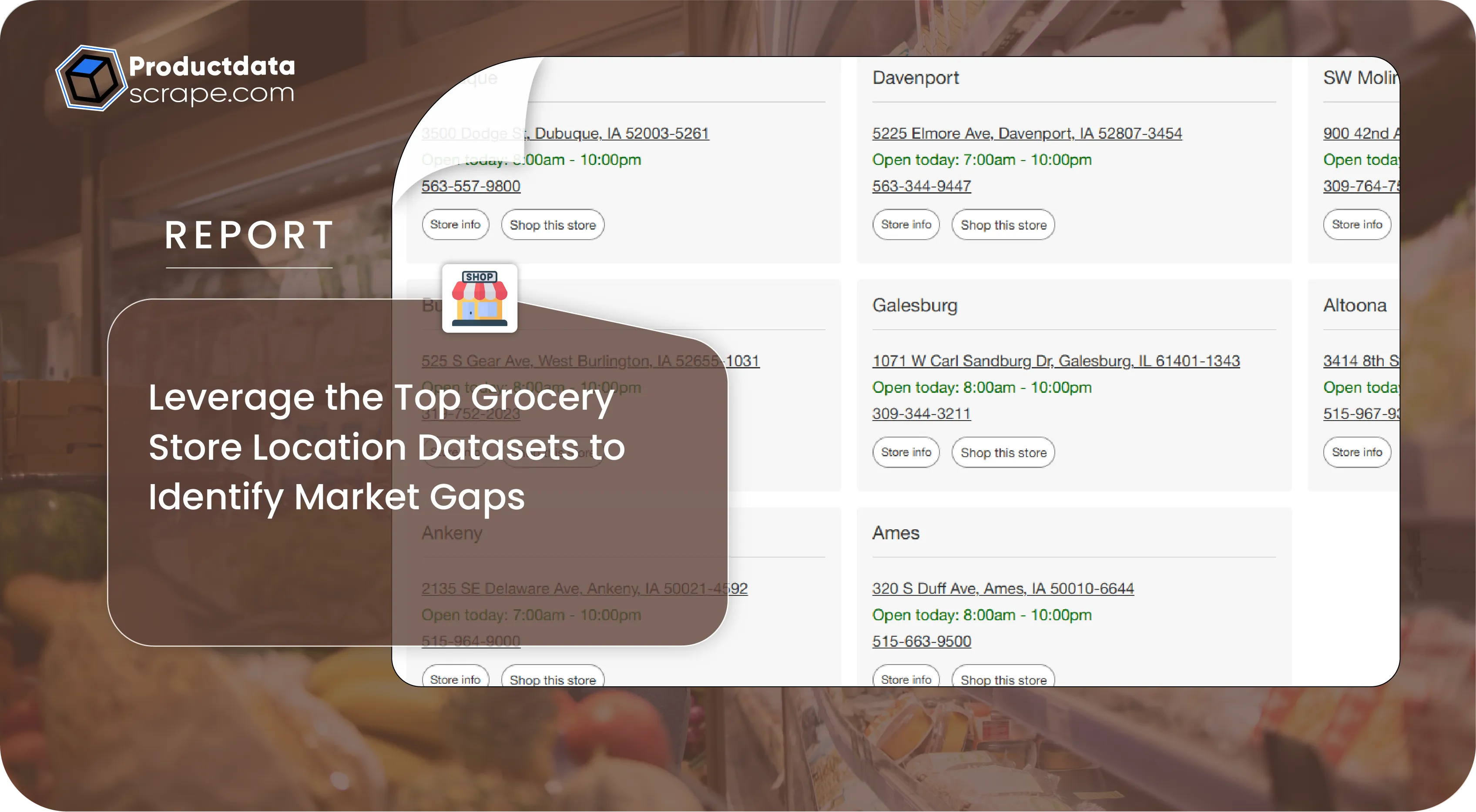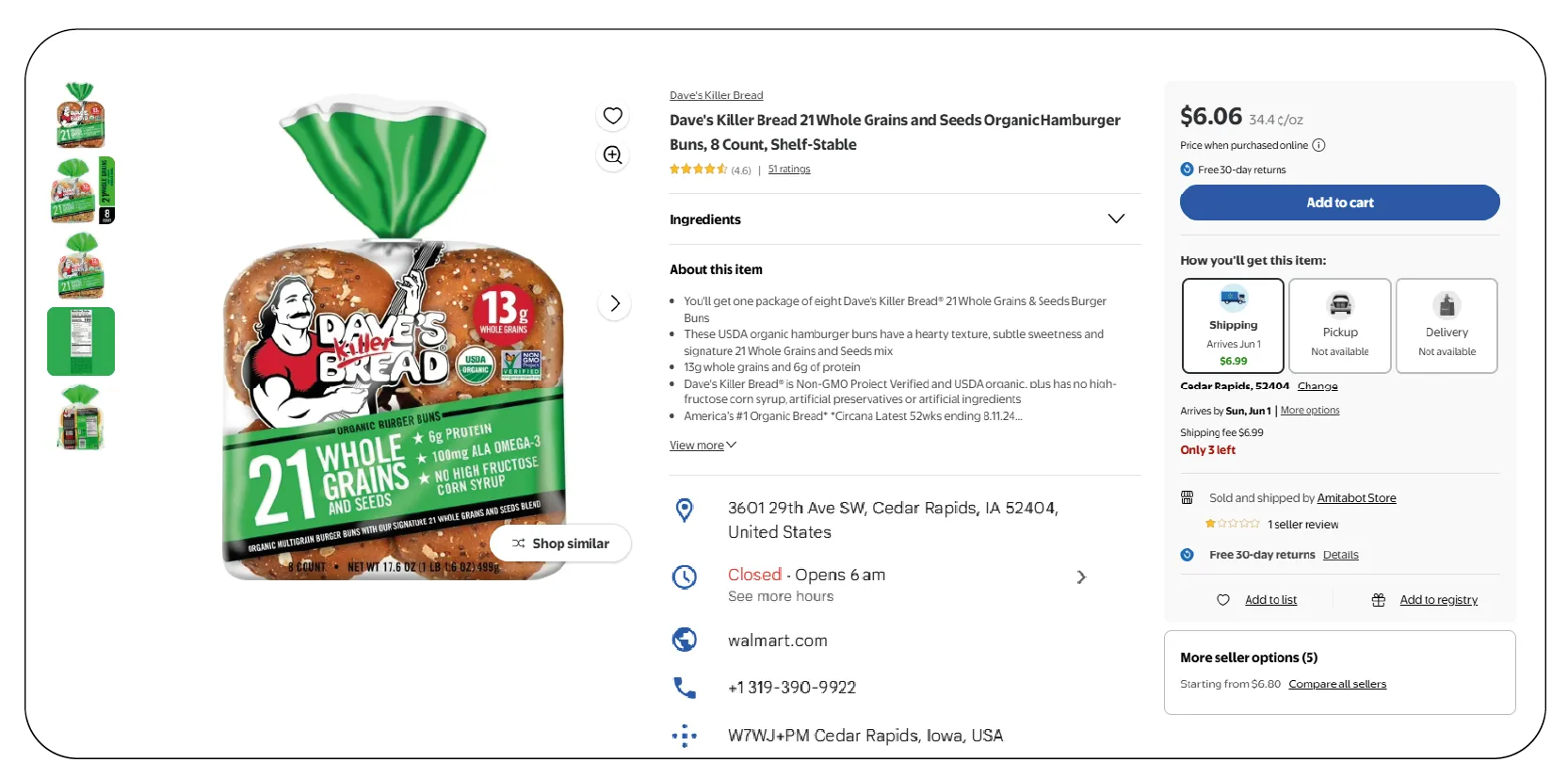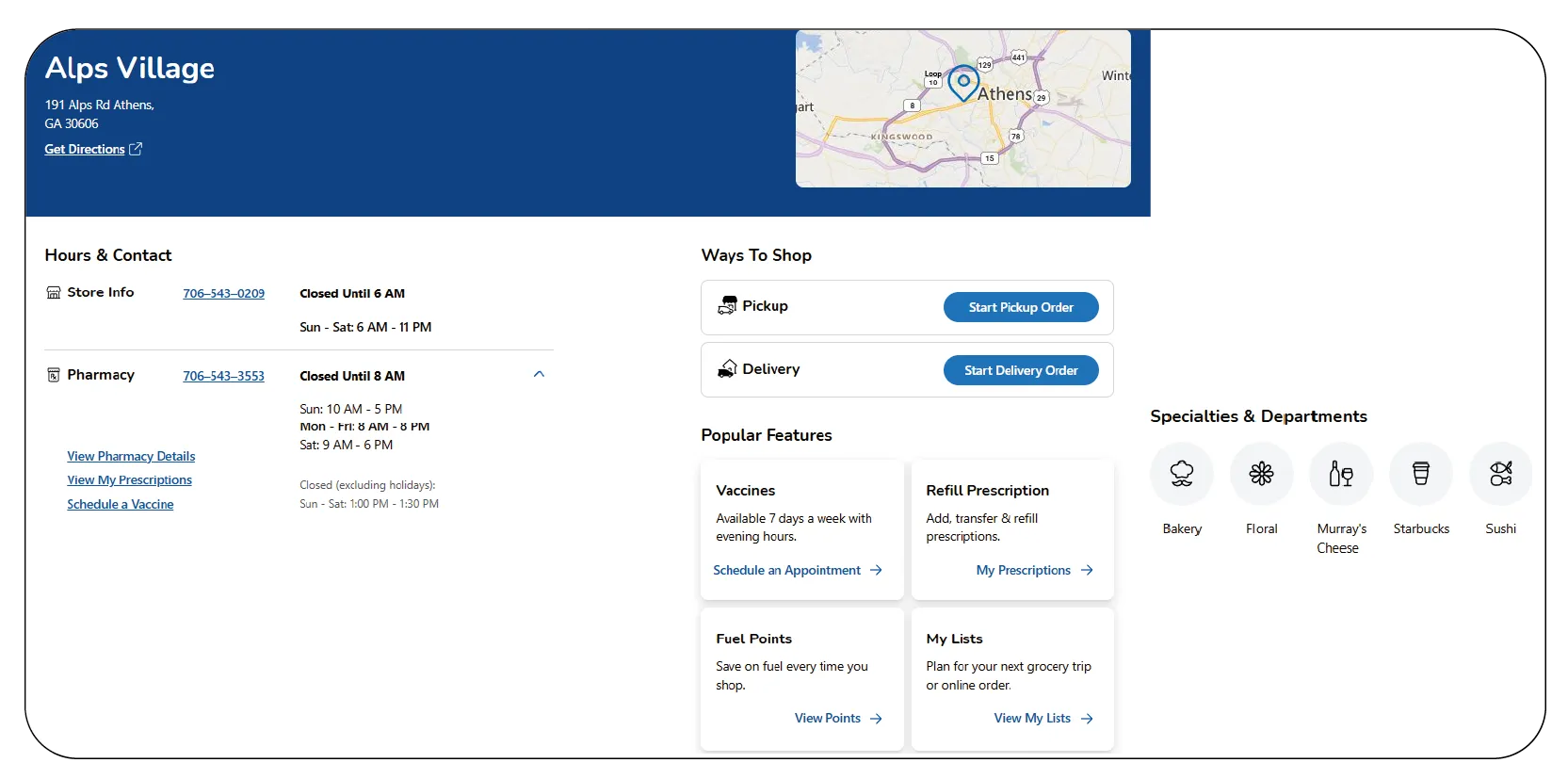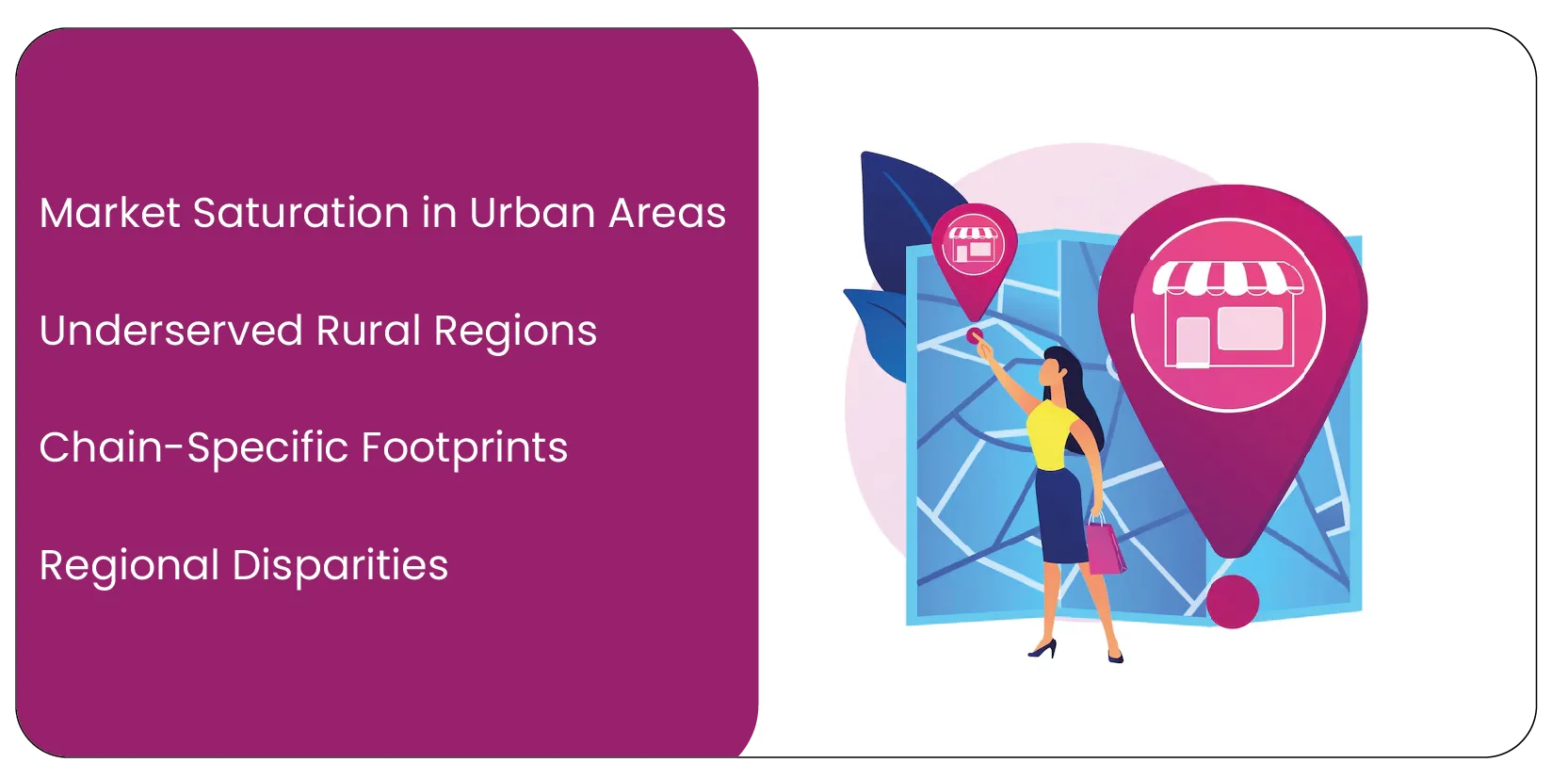
Introduction
The grocery retail sector is vital to the economy, providing essential access
to food and household items. For retailers, urban planners, and policymakers, understanding
where grocery stores are located is critical to identifying market opportunities, avoiding
oversaturation, and improving logistics. Through Grocery Store Geolocation Data Scraping,
businesses can gather detailed information such as store addresses, phone numbers, hours of
operation, and service coverage areas. Using automated tools to Scrape Grocery Store Location
Data, it's possible to analyze spatial distribution patterns and identify underserved regions
that could benefit from new retail development. This report presents insights from Top Grocery
Store Location Datasets from leading U.S. chains. By mapping and interpreting this
location-based data, stakeholders can make informed decisions that enhance customer access,
streamline supply chains, and strengthen market positioning. The findings highlight how web
scraping empowers data-driven strategies in the evolving grocery retail landscape.
Methodology

Data was collected by scraping publicly available location information from the
websites of three major U.S. grocery chains: Walmart, Kroger, and Whole Foods Market. These
chains were selected for their significant market presence and diverse customer bases. Web
Scraping Supermarket Location Data was performed using Python with libraries such as
BeautifulSoup and Scrapy to Extract Grocery Chain Store Locations Data, including store
addresses, geographic coordinates (latitude and longitude), and store types (e.g., supercenter,
neighborhood market). The resulting Supermarket Chain Addresses Dataset was aggregated from
September to October 2025, ensuring coverage of recent store openings and closures. The scraped
data was cleaned, standardized, and stored in a structured format for analysis. Geographic
Information System (GIS) tools and Python's Pandas library were used to analyze spatial
distribution and demographic correlations.
Data Overview
The scraped dataset includes 8,750 store locations across the three chains,
covering all 50 U.S. states. The data points collected for each store include:
- Store name and chain
- Full address (street, city, state, ZIP code)
- Latitude and longitude
- Store type (e.g., supercenter, supermarket, specialty store)
- Estimated store size (where available)
The dataset was segmented into urban and rural locations based on ZIP code
classifications from the U.S. Census Bureau. Urban areas are defined as those with a population
density exceeding 1,000 people per square mile.
Table 1: Store Distribution by Chain and Region
| Chain |
Urban Stores |
Rural Stores |
Total Stores |
% Urban |
% Rural |
| Walmart |
3,200 |
1,500 |
4,700 |
68% |
32% |
| Kroger |
2,100 |
600 |
2,700 |
78% |
22% |
| Whole Foods |
1,250 |
100 |
1,350 |
93% |
7% |
| Total |
6,550 |
2,200 |
8,750 |
75% |
25% |
Table Notes: Urban and rural classifications are based on U.S.
Census Bureau population density data. Percentages are rounded to the nearest whole number.
Table 2: Average Store Density by State (Top 5 and Bottom 5)
| State |
Stores per 100,000 Residents |
Total Stores |
Population (Millions) |
| Top 5 |
|
|
|
| Arkansas |
5.8 |
175 |
3.0 |
| Oklahoma |
5.4 |
215 |
4.0 |
| Mississippi |
5.1 |
150 |
2.9 |
| Texas |
4.9 |
1,450 |
29.5 |
| Alabama |
4.7 |
235 |
5.0 |
| Bottom 5 |
|
|
|
| New York |
1.2 |
240 |
20.0 |
| California |
1.1 |
430 |
39.0 |
| Rhode Island |
1.0 |
11 |
1.1 |
| Hawaii |
0.9 |
13 |
1.4 |
| Alaska |
0.8 |
6 |
0.7 |
Table Notes: Store density is calculated as the number of
stores per 100,000 residents, using 2025 population estimates from the U.S. Census Bureau.
Analysis

The analysis of the scraped data reveals several patterns in grocery store
distribution:
-
Urban vs. Rural Distribution: Table 1 shows that 75% of grocery stores are
in urban areas, reflecting higher population density and consumer demand. Whole Foods has
the highest urban concentration (93%), likely due to its focus on affluent, health-conscious
demographics in metropolitan areas. With 32% rural stores, Walmart demonstrates a broader
reach into less densely populated regions, leveraging its supercenter model to serve as a
one-stop shop. This insight was made possible through Grocery Retail Chain Location Data
Scraping, which revealed distinct patterns in how each chain targets different geographic
markets.
-
Regional Variations: Table 2 highlights significant regional disparities in
store density. Southern states like Arkansas and Oklahoma have the highest store density,
driven by Walmart’s strong presence in its home region (Arkansas is Walmart’s headquarters
state). In contrast, densely populated states like New York and California have lower store
density, possibly due to higher real estate costs and competition from local chains not
included in this dataset. These trends were captured using Real-Time Grocery Store Location
Data Extraction, allowing for up-to-date mapping of store presence across different regions.
-
Chain-Specific Strategies: Walmart’s data indicates a balanced approach,
with large supercenters (average size: 180,000 sq. ft.) dominating urban and rural areas.
Kroger’s stores, averaging 80,000 sq. ft., are concentrated in urban centers, reflecting its
focus on traditional supermarkets. Whole Foods, with smaller stores (average 40,000 sq.
ft.), targets urban markets with high-income demographics, as evidenced by its low rural
presence. Extract Grocery & Gourmet Food Data to enable comparison of store formats and
location targeting across chains.
-
Geographic Clustering: Store locations were mapped using GIS analysis to
identify clustering patterns. Walmart stores show a dispersed pattern, with clusters around
major highways and distribution hubs. Kroger stores are more tightly clustered in urban
centers, particularly in the Midwest and Southeast. Whole Foods locations are heavily
concentrated in coastal cities, with notable gaps in the Midwest and rural South. These
spatial insights were derived from Web Scraping Grocery & Gourmet Food Data, facilitating
comprehensive geographic visualization of store networks.
Key Findings

-
Market Saturation in Urban Areas: The high urban concentration (75%)
suggests market saturation in cities, particularly for Whole Foods, which may face
challenges expanding further in these areas due to competition and limited real estate.
-
Underserved Rural Regions: Rural areas, especially in the Northeast and
West, have significantly lower store density, indicating potential opportunities for
expansion or alternative models like smaller-format stores.
-
Chain-Specific Footprints: Walmart’s extensive rural presence positions it
as a dominant player in less-served markets. Whole Foods’ urban focus limits its reach but
aligns with its brand identity.
-
Regional Disparities: Southern states benefit from higher store density,
potentially improving food access, while states like Alaska and Hawaii face accessibility
challenges due to low density and geographic constraints.
Data Visualization

Key trends are summarized through a detailed narrative and a tabular breakdown
of market share and regional density metrics to provide a clearer understanding of the dataset
without relying on graphical representations. The following points highlight the distribution
patterns identified using Quick Commerce Grocery & FMCG Data Scraping techniques that enabled
real-time, accurate extraction of store location and market coverage information.
-
Market Share by Chain: Walmart accounts for 4,700 stores (54% of the
total), Kroger contributes 2,700 stores (31%), and Whole Foods has 1,350 stores (15%). This
distribution underscores Walmart’s dominance in the grocery retail, particularly in store
count, while Whole Foods maintains a smaller, more specialized footprint.
-
Regional Density Trends: The Southern states, particularly Arkansas,
Oklahoma, and Mississippi, exhibit the highest store density, with an average of 5.4 stores
per 100,000 residents across these states. In contrast, the Northeast and Western states,
such as New York, California, and Alaska, average only 1.0 stores per 100,000 residents,
highlighting significant disparities in grocery access.
-
Urban-Rural Divide: The dataset reveals that 6,550 stores (75%) are in
urban areas, with Whole Foods having the highest urban concentration at 93%. Walmart’s 32%
rural presence is notable, indicating its role in serving less densely populated areas.
The following table summarizes key metrics for quick reference:
| Metric |
Walmart |
Kroger |
Whole Foods |
Total/Average |
| Total Stores |
4,700 |
2,700 |
1,350 |
8,750 |
| Market Share (%) |
54% |
31% |
15% |
100% |
| Urban Stores (%) |
68% |
78% |
93% |
75% |
| Rural Stores (%) |
32% |
22% |
7% |
25% |
| Avg. Store Size (sq. ft.) |
180,000 |
80,000 |
40,000 |
100,000 |
| Avg. Density (stores/100,000) |
2.8 |
1.6 |
0.8 |
1.7 |
Table Notes: Market share is calculated based on total store count. Average density is computed using national population estimates (approximately 330 million in 2025).
This tabular summary and narrative provide a concise overview of the data, facilitating quick insights into chain dominance, urban-rural distribution, and regional variations without the need for visual graphics.
Conclusion
The analysis of scraped grocery store location data reveals distinct patterns in retail distribution, with urban areas hosting the majority of stores and significant regional variations in density. Walmart’s broad geographic reach contrasts with Whole Foods’ urban-centric strategy, while Kroger balances between the two. The findings, derived through Grocery & Supermarket Data Scraping Services, highlight opportunities for expansion in underserved rural areas and challenges in saturated urban markets. The summarized metrics, supported by a comprehensive Grocery Store Dataset, provide actionable insights for stakeholders, enabling data-driven decisions in retail planning and policy development. Future research could incorporate additional chains or demographic data, leveraging advanced Grocery Data Scraping Services, to further refine market insights.
At Product Data Scrape, we strongly emphasize ethical
practices across all our services,
including Competitor Price Monitoring and Mobile
App Data Scraping. Our commitment to
transparency and integrity is at the heart of everything we do. With a global presence and a
focus on personalized solutions, we aim to exceed client expectations and drive success in data
analytics. Our dedication to ethical principles ensures that our operations are both responsible
and effective.











